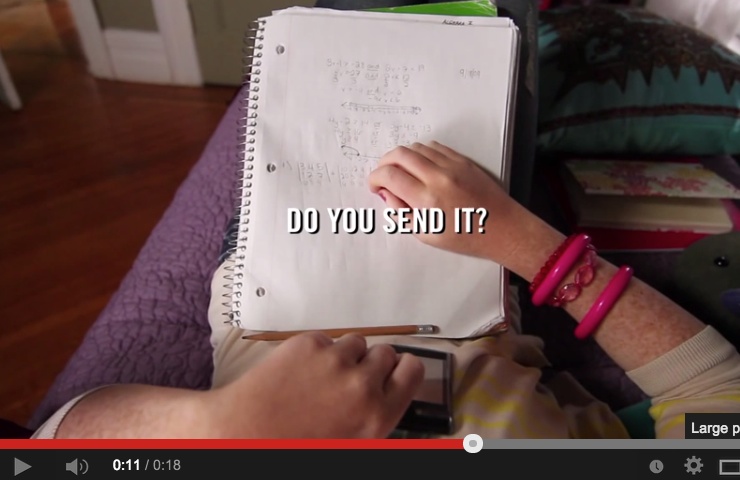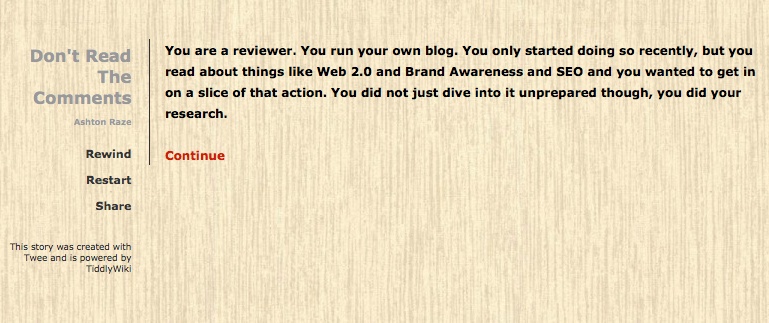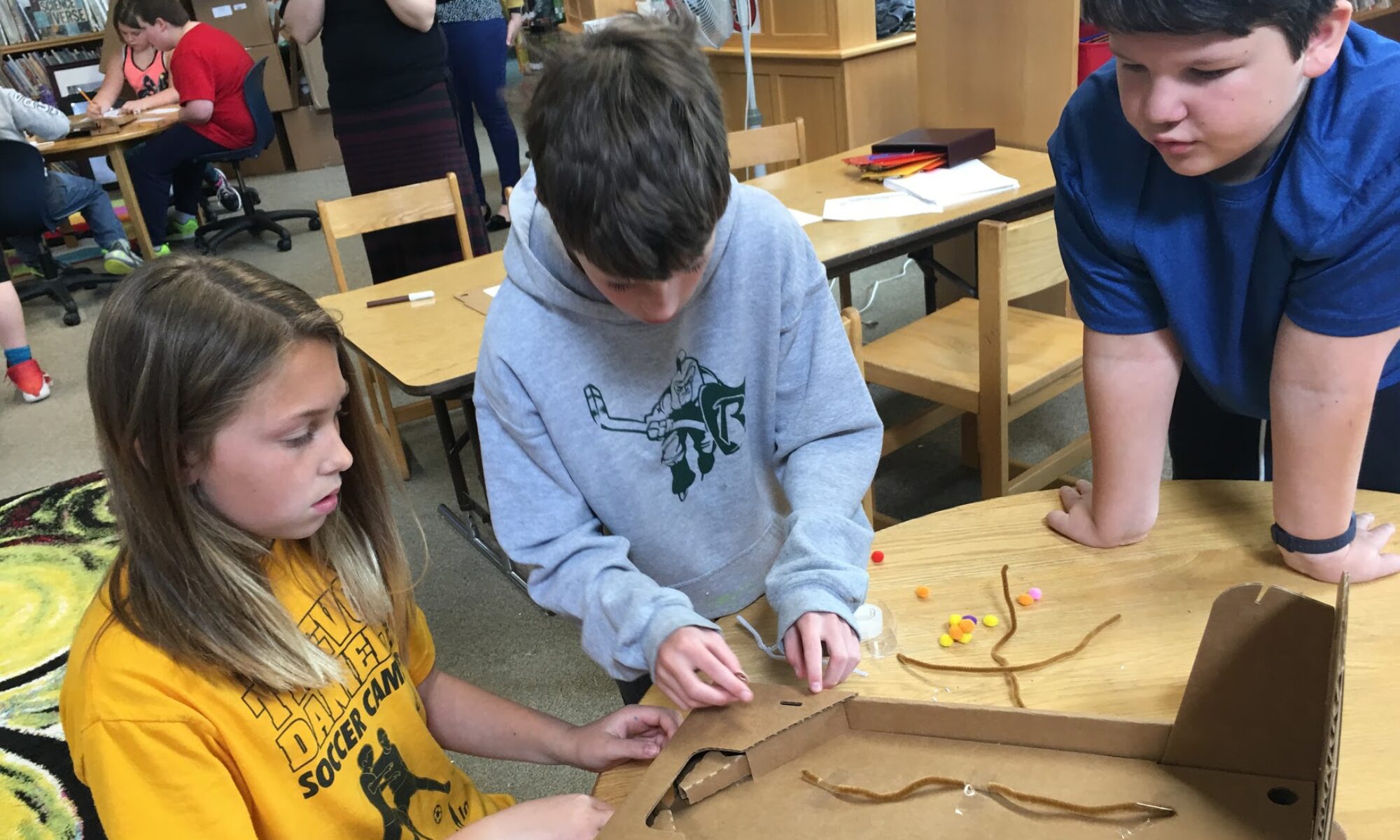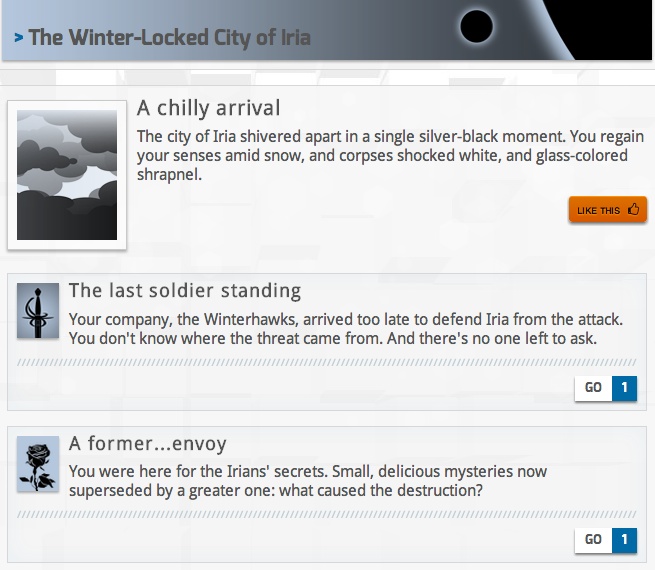Want to try out writing interactive fiction and games with your students? Here are three tools that make it easy to get started.
In order of ease of use: YouTube

YouTube’s recently beefed up their suite of online editing tools (including a bank of royalty-free audio clips) and made them simpler to use. By embedding text-based links in video, you can tell an interactive video-based story.
YouTube Pros:
- editing tools easy to use
- doesn’t require a ton of writing, so caters to visual storytellers
YouTube Cons:
- doesn’t require a ton of writing
- YouTube may be blocked at your school (but that’s a WHOLE other blogpost)
Next up: StoryNexus
StoryNexus made a big splash when it was introduced via the way-too-addictive speculative steampunk game Fallen London. Players navigate through a virtual, text-based world in a Choose-Your-Own-Adventure manner, but with choose-a-card activities that interject an element of chance into the proceedings.
StoryNexus Pros:
- Easy and compelling to get really into world-building
- Lots of students already on there with games; peers, feedback, ideas
- Library of GoogleDocs manuals and crowd-sourced how-to’s
- Easy to add images and audio to text
- Lots and lots of writing to do, boosts world-building
StoryNexus Cons:
- Students need to sign up for accounts
- Hard to build a game in one class period
- Lots and lots of writing to do
And then there’s Twine
(“Do it for the Twine! I ain’t gonna do–“)
Ahem.

Twine‘s a challenging little piece of software that takes a step closer to computer programming logic while you build your games. It’s a stellar introduction to the concept of global vs. local variables, for instance*.
Twine games are browser-based, which means you can practice your HTML and CSS skills while you sort out what kind of tea the yeti usually drinks. Yes, I made that game**. It was not entirely easy but the things that were complicated didn’t make me tear my hair out. They were fun to figure out, and as a fan of interactive fiction, I enjoy the pace of the finished product.
Twine Pros:
- The ability to embed videos, images and audio make this a truly multimedia storytelling platform
- Lets students bone up on HTML and CSS while they write
Twine Cons:
- Steeper learning curve than the other two
Here are some lovely related links for you to disappear down the rabbithole of your choice:
Do you:
- Want to set your student filmmakers loose with YouTube?
- Have questions about this whole open-source StoryNexus thing?
- Prefer some scaffolding to get Twine support in your classroom?
- Need more information about interactive fiction in general?
Let the games… begin!
*If that sentence didn’t make sense to you, get in touch. Let’s get you a seat at this summer’s Code Camp.
**And yes, it’s not finished, because I also have to write many fine blog posts each week, such as this one. You will cope.


